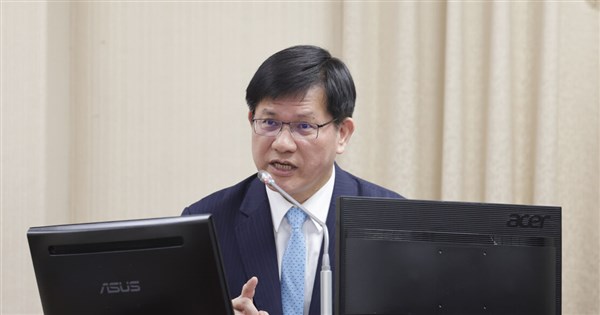As energy costs rise, staying cool a growing challenge for low-income Americans – CBS News

Report on Energy Affordability and its Intersection with Sustainable Development Goals
Introduction: The Human Impact of Energy Poverty
A case study from Dallas, Texas, highlights the critical intersection of energy affordability, public health, and poverty. Individuals with low incomes, such as Angela Harmon, face significant financial hardship in affording essential services like air conditioning during periods of extreme heat. This situation directly undermines several Sustainable Development Goals (SDGs), including:
- SDG 1 (No Poverty): The high cost of electricity forces individuals to choose between basic needs, exacerbating financial instability and poverty.
- SDG 3 (Good Health and Well-being): Lack of access to cooling during heatwaves poses severe health risks, particularly for vulnerable populations with pre-existing health conditions, potentially leading to fatalities.
- SDG 10 (Reduced Inequalities): The burden of high energy costs disproportionately affects low-income communities, widening the inequality gap.
Policy Challenges to Energy Accessibility and Poverty Alleviation (SDG 1 & SDG 10)
Government assistance programs are crucial for mitigating energy poverty. The Low Income Home Energy Assistance Program (LIHEAP) has historically provided vital support to over six million Americans, directly contributing to the objectives of SDG 1 and SDG 10 by providing a safety net for vulnerable households.
However, proposed policy changes threaten this support system. The administration’s fiscal year 2026 budget proposal includes the elimination of LIHEAP. The rationale provided by the White House Office of Management and Budget includes:
- Labeling the program as “failed” and “mired in fraud.”
- Asserting that states should be responsible for funding and administering their own utility assistance programs.
The termination of such a federal program would represent a significant setback for achieving targets related to poverty reduction and equitable access to essential services.
Climate Change as a Driver of Energy Costs and Health Risks (SDG 3, SDG 7, & SDG 13)
Scientific research establishes a direct link between climate change and rising energy costs, further complicating efforts to achieve the SDGs. Andrew Dessler, a professor of atmospheric sciences at Texas A&M University, has identified climate change as a primary factor in increasing electricity expenses. This connection impacts the following goals:
- SDG 13 (Climate Action): The report underscores that human-induced greenhouse gas emissions lead to higher global temperatures.
- SDG 7 (Affordable and Clean Energy): Increased temperatures drive higher demand for air conditioning, which in turn causes surges in wholesale electricity costs that are passed on to consumers, making energy less affordable.
- SDG 3 (Good Health and Well-being): The resulting energy poverty directly threatens public health, as previously noted.
Data illustrates this trend, with climate change contributing to significant wholesale electricity cost increases between the summers of 2023 and 2024 in regions such as New England (35%), California (30%), and Texas (20%). Furthermore, the U.S. Bureau of Labor Statistics reported a 5.5% rise in electricity costs in July compared to the previous year.
The Role of Renewable Energy in Achieving Sustainable Goals (SDG 7 & SDG 11)
The transition to clean energy is presented as a viable solution to mitigate rising costs and advance sustainable development. Solar power is identified as the most cost-effective form of energy, capable of reducing overall electricity prices. This aligns directly with SDG 7 (Affordable and Clean Energy) by promoting a sustainable energy source that can lower financial burdens on consumers.
However, policy decisions that favor higher-cost fossil fuels like oil and natural gas over renewable projects actively hinder this transition. Such policies not only threaten the affordability of energy but also impede progress towards SDG 11 (Sustainable Cities and Communities) by failing to build resilient and sustainable infrastructure. The long-term consequence of de-prioritizing renewables is projected to be a significant increase in energy expenses for all consumers.
Analysis of Sustainable Development Goals in the Article
1. Which SDGs are addressed or connected to the issues highlighted in the article?
-
SDG 1: No Poverty
The article directly addresses poverty by focusing on low-income individuals like Angela Harmon who cannot afford essential services like air conditioning. The discussion of the Low Income Home Energy Assistance Program (LIHEAP) as a social safety net for “very, very low income” community members connects the issue to poverty reduction efforts.
-
SDG 3: Good Health and Well-being
The health implications of unaffordable energy are highlighted. Pastor Chris Simmons states that for congregants with “added health conditions,” the inability to afford air conditioning is a life-threatening issue, as they “may not survive” the heat. This links energy poverty directly to health risks and mortality.
-
SDG 7: Affordable and Clean Energy
This is a central theme. The article’s core issue is the lack of affordable energy for cooling, as exemplified by Angela Harmon’s struggle to pay her “costly, it’s expensive” electricity bills. It also discusses clean energy, noting that solar power is the “cheapest form of energy” and that administration policies have “slashed renewable projects.”
-
SDG 10: Reduced Inequalities
The article underscores the unequal burden of rising energy costs and climate change. The problem disproportionately affects vulnerable, low-income populations. The LIHEAP program is presented as a measure to reduce this inequality by providing targeted assistance, and its proposed elimination would exacerbate the gap between those who can and cannot afford to adapt to rising temperatures.
-
SDG 13: Climate Action
The article explicitly connects the rising cost of electricity to climate change. Professor Andrew Dessler’s research is cited to show how “humans emitting greenhouse gases to the atmosphere, increases the temperature,” which in turn increases demand for air conditioning and drives up costs. The discussion of energy policy, favoring fossil fuels over renewables, is also a key aspect of climate action.
2. What specific targets under those SDGs can be identified based on the article’s content?
-
Target 1.3: Implement nationally appropriate social protection systems.
The article focuses on the Low Income Home Energy Assistance Program (LIHEAP), described as a “federal government’s… utility assistance program.” This is a direct example of a social protection system designed to support the poor and vulnerable. The proposed budget that would “eliminate LIHEAP” is a direct threat to this target.
-
Target 3.d: Strengthen the capacity for… management of national and global health risks.
Extreme heat, exacerbated by climate change, is a significant health risk. The pastor’s warning that people “may not survive” without air conditioning highlights a failure in managing this risk for vulnerable populations. The inability to afford cooling represents a lack of capacity to handle climate-related health threats.
-
Target 7.1: Ensure universal access to affordable, reliable and modern energy services.
The experience of Angela Harmon, who finds her electricity bill so “expensive” she has to “juggle to pay it,” demonstrates a clear lack of access to *affordable* energy. The article shows that while energy may be available, its cost makes it inaccessible for low-income households.
-
Target 7.2: Increase substantially the share of renewable energy in the global energy mix.
The article discusses solar power as the “cheapest form of energy” that can “help push down prices.” It then expresses concern over “Trump administration policies that have slashed renewable projects in favor of higher-cost oil and natural gas,” indicating a direct relevance to the goal of increasing the share of renewable energy.
-
Target 13.1: Strengthen resilience and adaptive capacity to climate-related hazards.
Rising temperatures are a climate-related hazard. The ability to use air conditioning is a key form of adaptive capacity to extreme heat. The article shows that for low-income individuals, this capacity is compromised by high energy costs, making them less resilient to the impacts of climate change.
3. Are there any indicators mentioned or implied in the article that can be used to measure progress towards the identified targets?
-
Indicator for Target 1.3: Proportion of population covered by social protection floors/systems.
The article provides a specific number for the reach of the LIHEAP program, stating that it “serves more than six million Americans.” This figure is a direct indicator of the population covered by this specific social protection system.
-
Indicator for Target 7.1: Affordability of energy.
The article cites the U.S. Bureau of Labor Statistics, noting that “electricity costs rose 5.5% in July compared to one year ago.” This percentage increase is a direct indicator used to measure the changing affordability of energy for consumers.
-
Indicator for Target 13.1: Economic losses attributed to climate-related disasters.
The research cited in the article quantifies the economic impact of climate change on energy costs. It states that “climate change increased wholesale electricity costs by an average of 35% in the New England region, 30% in California, 20% in Texas and 17% in New York.” These percentages serve as indicators of the direct economic costs resulting from climate-related hazards (i.e., increased heat).
-
Indicator for Target 7.2: Renewable energy share in the total final energy consumption.
While not providing a specific percentage, the article implies a negative trend for this indicator. The mention of policies that have “slashed renewable projects in favor of higher-cost oil and natural gas” suggests a move away from renewables, which would be reflected in data measuring the share of renewable energy.
4. Summary Table of SDGs, Targets, and Indicators
| SDGs | Targets | Indicators |
|---|---|---|
| SDG 1: No Poverty | 1.3: Implement nationally appropriate social protection systems and measures for all. | The number of beneficiaries of the LIHEAP program: “serves more than six million Americans.” |
| SDG 3: Good Health and Well-being | 3.d: Strengthen the capacity for early warning, risk reduction and management of national and global health risks. | Implied risk of mortality from heat for vulnerable populations: “if they have added health conditions, may not survive.” |
| SDG 7: Affordable and Clean Energy |
7.1: Ensure universal access to affordable, reliable and modern energy services.
7.2: Increase substantially the share of renewable energy in the global energy mix. |
The rise in the cost of electricity: “electricity costs rose 5.5% in July compared to one year ago.”
Policies that have “slashed renewable projects in favor of higher-cost oil and natural gas.” |
| SDG 10: Reduced Inequalities | 10.2: Empower and promote the social, economic and political inclusion of all, irrespective of… economic or other status. | The existence of a program (LIHEAP) targeting “very, very low income” community members to mitigate economic hardship. |
| SDG 13: Climate Action | 13.1: Strengthen resilience and adaptive capacity to climate-related hazards and natural disasters. | Quantified economic impact of climate change on energy costs: “climate change increased wholesale electricity costs by… 20% in Texas.” |
Source: cbsnews.com

What is Your Reaction?
 Like
0
Like
0
 Dislike
0
Dislike
0
 Love
0
Love
0
 Funny
0
Funny
0
 Angry
0
Angry
0
 Sad
0
Sad
0
 Wow
0
Wow
0










/campaigns/16-days-of-activism-against-gender-based-violence/pr-web-banner.tmb-1200v.jpg?sfvrsn=8cc7b98e_1#)





































































